Panasonic Leica DG Elmarit 200 mm f/2.8 POWER O.I.S.
3. Build quality and image stabilization
In the photo below the Panasonic Leica DG Elmarit 200 mm f/2.8 POWER O.I.S. is positioned between the Micro 4/3 version of the Sigma C 30 mm f/1.4 DC DN and the Voigtlander Nokton 25 mm f/0.95.
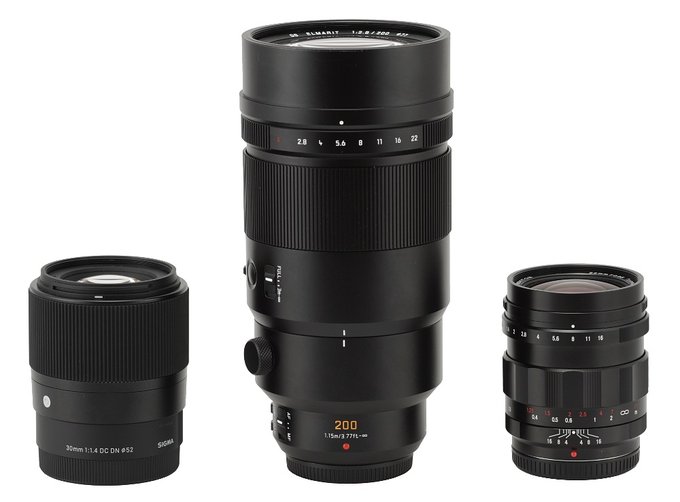 |
Please Support UsIf you enjoy our reviews and articles, and you want us to continue our work please, support our website by donating through PayPal. The funds are going to be used for paying our editorial team, renting servers, and equipping our testing studio; only that way we will be able to continue providing you interesting content for free. |
- - - - - - - - - - - - - - - - - - - - - - - - - - - - - - - - - - - - - - - - - - - - - - - -
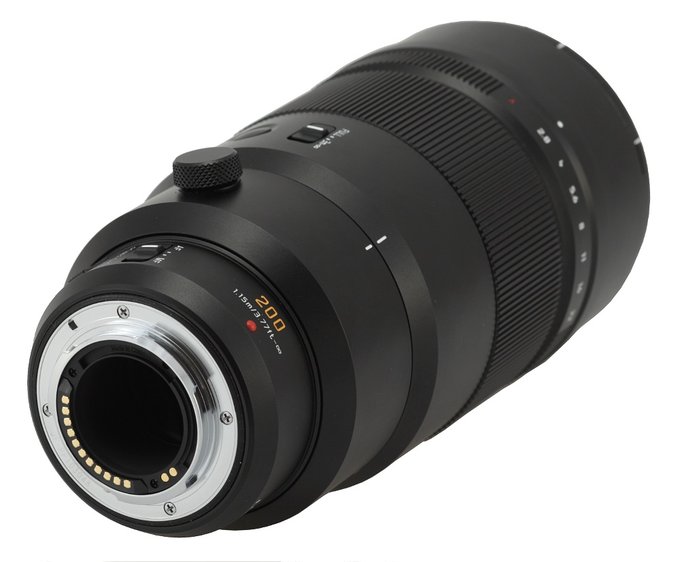 |
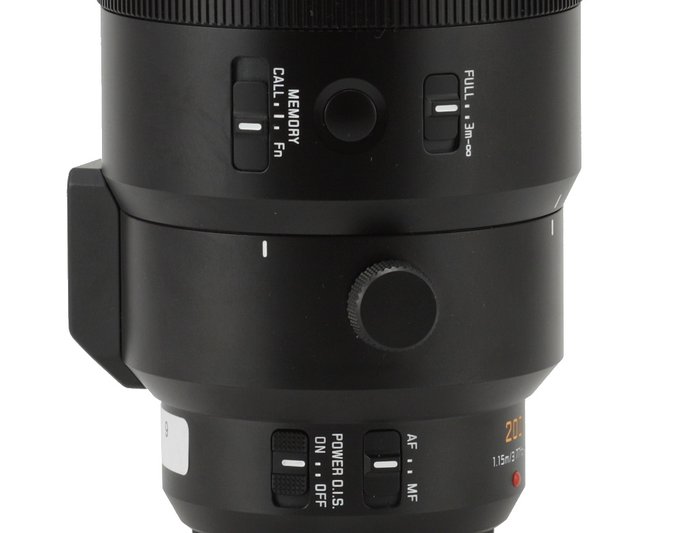 |
The next immobile part of the casing features a focusing mechanism mode switch (FULL and 3 metres–∞), a round button and a CALL, MEMORY, Fn toggle which allows you to retain and recall chosen autofocus positions.
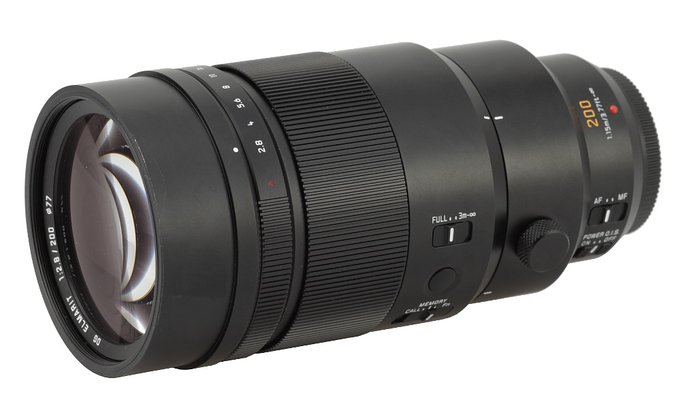 |
The next ring, 11 mm wide, is used for aperture control. It moves every 1/3 EV stop increment and features also an automatic mode (A). While cooperating with Olympus bodies the ring doesn’t work and you set the aperture from the camera menu level.
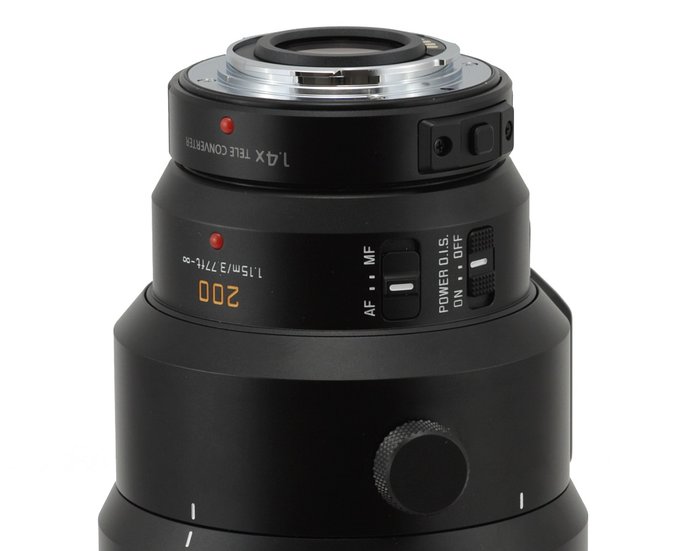 |
The front element is 66 mm in diameter; it doesn’t move and is surrounded by an inscription with the parameters of the lens (Leica DG Elmarit 1:2.8/200) and a non-rotating filter thread, 77 mm in diameter.
When it comes to optical construction, the lens consists of 15 elements positioned in 13 groups, including two UED elements with ultra low dispersion. Inside you can also find a round aperture with nine diaphragm blades which can be closed down to f/22 at the maximum. That value doesn’t change after attaching a teleconverter.
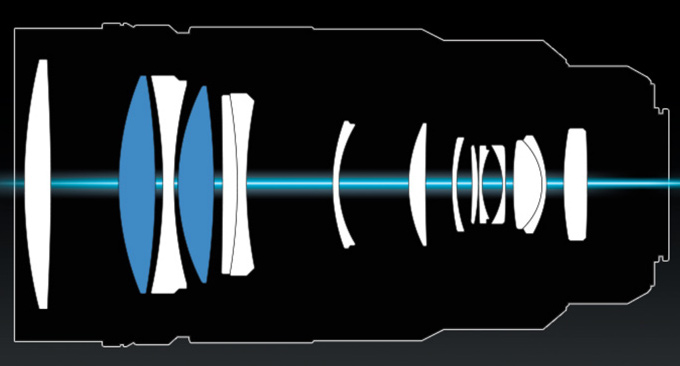 |
Buyers get both caps, a hood and a case in the box. Our set also featured a 1.4x teleconverter with separate caps and a case.
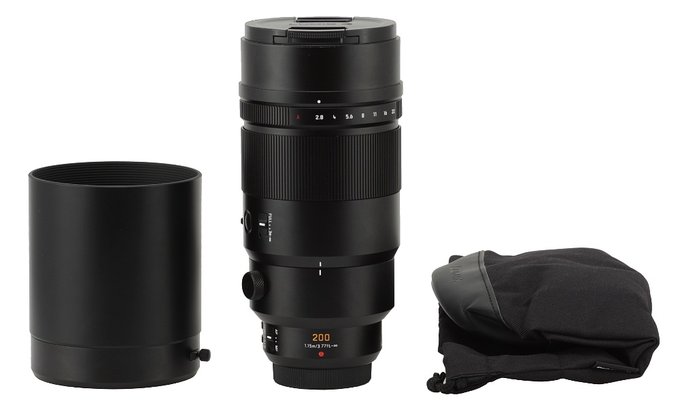 |
 |
Optical stabilization
The tested lens features an optical image stabilization unit and we checked its efficiency with the help of the Olympus E-M5 II. We took several dozen photos at every exposure time ranging from 1/400 to 1/4 of a second with the stabilization switched on and off and then we determined a percentage of blurred photos for each set. The appropriate graph showing that percentage, correlative with the exposure time expressed in EV (with 0 EV being an equivalent of 1/320 of a second), you can find below.
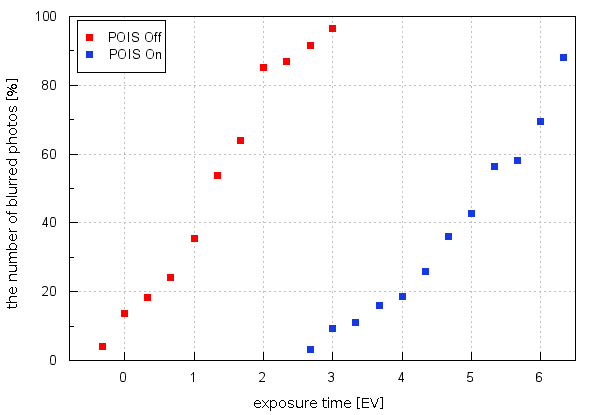
The maximum distance between both curves reaches 4.3 EV and such is, in our opinion, the efficiency of the optical stabilization unit. It is an excellent result.
It’s also worth remembering that the tested lens coupled with the newest Panasonic bodies offers you a possibility of joined performance of image optical stabilization in the lens and sensor stabilization in the camera. It is supposed to provide even better effects that each of those stabilizations separately. We wanted to check that and we chose the same method as before while attaching the Panasonic Lumix DMC-G9 to the tested lens. An appropriate graph with results you see below.
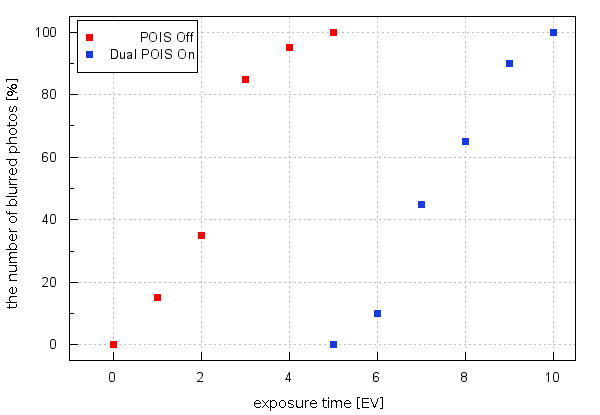
The effects are splendid indeed. The effective performance of both mechanisms was able to reach a sensational value of 5.5 EV. It means that even employing times below 1/10 of a second and using a lens with a focal length equivalent of 400 mm you can take good quality photos as most of them will be crisp and sharp.






